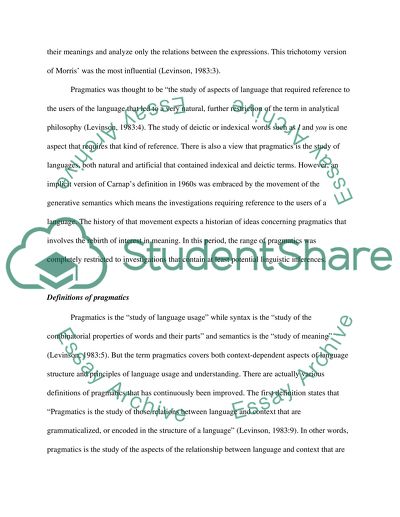Cite this document
(“Pragmatics Essay Example | Topics and Well Written Essays - 3250 words”, n.d.)
Retrieved de https://studentshare.org/miscellaneous/1499887-pragmatics
Retrieved de https://studentshare.org/miscellaneous/1499887-pragmatics
(Pragmatics Essay Example | Topics and Well Written Essays - 3250 Words)
https://studentshare.org/miscellaneous/1499887-pragmatics.
https://studentshare.org/miscellaneous/1499887-pragmatics.
“Pragmatics Essay Example | Topics and Well Written Essays - 3250 Words”, n.d. https://studentshare.org/miscellaneous/1499887-pragmatics.


